- Home
- /
- Vitamins etc.
- /
- Macronutrients
- /
- Proteins
- /
- Proteins and Healthy Eating:...
In the intricate and mesmerizing world of biology, proteins stand as the true marvels of molecular ingenuity. These tiny yet mighty molecular machines play an awe-inspiring role, shaping the very essence of life itself. From orchestrating the delicate dance of biochemical reactions within cells to providing the structural foundation for tissues and organs, proteins wield an influence that permeates every aspect of living organisms and healthy eating.
As we venture into the captivating realm of proteins, we embark on a journey of discovery that reveals the secrets behind their extraordinary functions, their diverse structures, and the pivotal roles they play in maintaining life’s delicate balance. Like the architects of a grand symphony, proteins conduct the intricate melodies of cellular processes, and understanding their composition and concertos holds the key to unraveling the mysteries of life.
Understanding Proteins in Healthy Eating
Proteins, the fundamental building blocks of life, are remarkable molecular machines that govern nearly every aspect of our existence. These versatile macromolecules carry out essential functions within cells, tissues, and organs, playing a pivotal role in the vast orchestra of life’s processes. In this article, we will embark on a journey to explore the fascinating world of proteins, uncovering their structure, functions, and significance in biology and beyond. Let’s delve into the complexities of these microscopic marvels and the wonders they hold within..
Amino Acids – The Building Bricks of Proteins
Amino acids are the basic building bricks of life, fundamental to the formation of proteins, enzymes, and many other vital molecules in living organisms. Comprising a central carbon atom (the alpha carbon), an amino group (NH2), a carboxyl group (COOH), a hydrogen atom, and a distinct side chain (R group), amino acids exhibit remarkable versatility due to the diversity of their side chains. This diversity grants each amino acid its unique properties and functions, influencing the three-dimensional structure and ultimate role of the proteins they construct.
There are 20 standard amino acids that form the foundation of proteins in all living organisms. These standard amino acids can be classified into three groups based on the characteristics of their side chains. The first group is nonpolar, hydrophobic amino acids, which possess side chains composed primarily of carbon and hydrogen atoms. Examples of this group include glycine, alanine, and valine. The second group is polar, uncharged amino acids, which feature hydrophilic side chains containing oxygen or nitrogen atoms. Serine, threonine, and asparagine are representative members of this group. The third group comprises polar, charged amino acids, with side chains carrying either a positive charge (basic) or a negative charge (acidic). Lysine, arginine, and histidine are examples of basic amino acids, while aspartic acid and glutamic acid represent the acidic amino acids.
1. Alanine (Ala)
Alanine is a small and simple amino acid with a nonpolar side chain, making it hydrophobic. Its presence is critical for protein stability, acting as a link between different regions of protein structures. Additionally, alanine plays a crucial role in energy metabolism, serving as a precursor for glucose production in the liver through gluconeogenesis.
2. Arginine (Arg)
Arginine is an essential amino acid that plays a vital role in various physiological processes. Its positively charged side chain makes it hydrophilic and enables interactions with negatively charged molecules and surfaces. Arginine is involved in protein synthesis, wound healing, immune function, and the production of nitric oxide, which helps regulate blood flow and blood pressure.
3. Asparagine (Asn)
Asparagine is a polar, hydrophilic amino acid that is important for maintaining protein structure and stability. Its side chain contains an amide group, making it a key component of the glycosylation process, where carbohydrates are attached to proteins to form glycoproteins. Asparagine also plays a role in cellular signaling and the transport of nitrogen between tissues.
4. Aspartic acid (Asp)
Aspartic acid is an acidic, negatively charged amino acid with a polar side chain. It is involved in the regulation of the body’s pH and acts as a neurotransmitter in the brain, facilitating communication between nerve cells. Aspartic acid is also essential for the citric acid cycle, a crucial part of cellular energy production.
5. Cysteine (Cys)
Cysteine is a unique amino acid with a thiol-containing side chain, making it susceptible to form disulfide bonds with other cysteine residues. These disulfide bonds play a critical role in stabilizing protein structures and maintaining their three-dimensional shapes. Cysteine is also involved in antioxidant defenses, as it can donate electrons to neutralize harmful free radicals.
6. Glutamic acid (Glu)
Glutamic acid is an acidic amino acid with a negatively charged side chain. It is an important excitatory neurotransmitter in the brain, facilitating nerve cell communication. Glutamic acid is also a precursor for glutamine, another amino acid involved in various metabolic pathways, and plays a role in protein synthesis.
7. Glutamine (Gln)
Glutamine is a polar amino acid with an amide side chain, making it highly versatile. It is abundant in the body and serves as a critical fuel for rapidly dividing cells, such as intestinal cells and immune cells. Glutamine also plays a role in maintaining the integrity of the gut lining and supporting the immune system.
8. Glycine (Gly)
Glycine is the smallest and simplest amino acid, with just a hydrogen atom as its side chain. Despite its simplicity, glycine is essential for collagen formation, making it a crucial component of connective tissues, skin, and bones. It is also an inhibitory neurotransmitter in the central nervous system, helping to regulate brain activity.
9. Histidine (His)
Histidine is an essential amino acid with a positively charged imidazole side chain. It plays a significant role in enzyme catalysis and acts as a proton donor and acceptor in enzymatic reactions. Histidine is also an important component of hemoglobin, the protein responsible for transporting oxygen in red blood cells.
10. Isoleucine (Ile)
Isoleucine is one of the branched-chain amino acids (BCAAs) and has a hydrophobic side chain. It plays a critical role in muscle metabolism and is involved in energy production during intense physical activity. Isoleucine is essential for protein synthesis and helps regulate blood sugar levels.
11. Leucine (Leu)
Leucine, another BCAA, is essential for protein synthesis, muscle growth, and repair. It also activates a pathway called the mTOR pathway, which regulates cell growth and metabolism. Leucine is often favored by athletes and fitness enthusiasts due to its role in muscle protein synthesis.
12. Lysine (Lys)
Lysine is an essential amino acid that plays a crucial role in protein synthesis, collagen formation, and immune function. It is particularly important for maintaining the structure and integrity of connective tissues, skin, and cartilage. Lysine also plays a role in calcium absorption and bone health.
13. Methionine (Met)
Methionine is the starting amino acid in protein synthesis and is essential for initiating the translation process. It contains sulfur in its side chain, making it important for the formation of disulfide bonds and aiding in protein structure stabilization. Methionine is also a precursor for other important molecules, including the amino acid cysteine and the antioxidant glutathione.
14. Phenylalanine (Phe)
Phenylalanine is an aromatic amino acid that serves as a precursor for various molecules, including tyrosine, dopamine, and other neurotransmitters. It has a essential significance in mood regulation and cognitive function. Phenylalanine is an basic amino acid that must be obtained from the diet.
15. Proline (Pro)
Proline is a unique amino acid with a secondary amine group, causing it to form a rigid ring structure. Its presence is crucial for maintaining the structure and stability of proteins, particularly in collagen and connective tissues. Proline also plays a role in wound healing and maintaining skin health.
16. Serine (Ser)
Serine is a polar amino acid that plays a role in various cellular processes. It is involved in the synthesis of phospholipids, which are essential components of cell membranes. Serine also serves as a precursor for the synthesis of other vital molecules, such as amino acids and neurotransmitters.
17. Threonine (Thr)
Threonine is key for protein synthesis and is involved in maintaining the balance of nitrogen in the body. It is also important for the immune system and essential for antibody production. Threonine is essential for maintaining the health of the gastrointestinal tract.
18. Tryptophan (Trp)
Tryptophan is a precursor for the neurotransmitter serotonin, which regulates mood and sleep. It also serves as a precursor for melatonin, a hormone that regulates the sleep-wake cycle. Tryptophan is essential and must be obtained from the diet.
19. Tyrosine (Tyr)
Tyrosine is an important precursor for several important molecules, including dopamine, adrenaline, and thyroid hormones. It plays a crucial role in neurotransmitter function, mood regulation, and metabolism. Tyrosine is synthesized from phenylalanine and is considered conditionally essential. meaning that it can be made by the body under normal circumstances. However, certain conditions or genetic factors may hinder its synthesis, making it necessary to obtain tyrosine from the diet.
20. Valine (Val)
Valine is the third and final branched-chain amino acid (BCAA) that plays a crucial role in muscle metabolism and energy production during exercise. It is also essential for protein synthesis and tissue repair. Valine, along with leucine and isoleucine, is particularly important for athletes and individuals engaged in intense physical activity.
Additional 21st and 22nd amino acids
Additionally to the 20 standard amino acids, some non-standard or modified amino acids are occasionally found in certain proteins. For example, selenocysteine and pyrrolysine are considered the 21st and 22nd amino acids, respectively.
Selenocysteine (Sec) – Selenocysteine is a rare amino acid that contains selenium instead of sulfur in its side chain. It is involved in a small subset of proteins known as selenoproteins, which have crucial significance in antioxidant defense and cellular redox regulation.
Pyrrolysine (Pyl) – Pyrrolysine is another rare amino acid that was discovered more recently. It is found in certain methanogenic archaea and is encoded by the UAG stop codon, which is typically a termination signal for protein synthesis. However, in these organisms, the UAG codon is recoded to encode pyrrolysine, allowing the synthesis of specific proteins with unique functions.
It is worth noting that while these extra amino acids exist and are found in certain organisms or proteins, they are not part of the universal genetic code used by all organisms. The 20 standard amino acids are the primary building bricks of proteins and form the basis of the vast majority of known proteins in living organisms.
The Functions of proteins in Healthy Eating
Proteins are the workhorses of the cell, executing a multitude of vital functions that are indispensable for life. Their versatile roles span from catalyzing biochemical reactions, providing structural support, aiding in transport, regulating gene expression, and facilitating communication within and between cells. The functional diversity of proteins is a testament to their remarkable adaptability and significance in the intricate web of life’s processes.
Catalysis
One of the primary functions of proteins is enzymatic catalysis. Enzymes are specialized proteins that accelerate the rate of biochemical reactions, allowing them to occur at a biologically relevant timescale. Acting as catalysts, enzymes lower the activation energy required for reactions to proceed, thereby increasing reaction rates. This function is critical for cellular metabolism, where numerous chemical reactions must occur efficiently to sustain life. Enzymes are involved in processes like breaking down nutrients during digestion, synthesizing essential molecules, and facilitating energy production through cellular respiration.
Structural element
In addition to catalysis, proteins serve as structural elements that provide support and maintain the shape of cells and tissues. For instance, the protein collagen forms the framework of connective tissues, such as skin, tendons, ligaments, and bones, imparting strength and resilience to these structures. Similarly, actin and myosin proteins constitute the contractile apparatus of muscles, enabling them to contract and generate movement. Without these structural proteins, the intricate organization and functionality of cells and tissues would be compromised.
Transport
Transport proteins are yet another crucial class of proteins that facilitate the movement of substances across cell membranes and throughout the body. These proteins function as carriers or channels, allowing specific molecules to cross biological barriers. One example is hemoglobin, a protein found in red blood cells that binds to oxygen in the lungs and transports it to tissues throughout the body, ensuring oxygen supply to support cellular respiration. Similarly, membrane transport proteins control the passage of ions, nutrients, and signaling molecules across cell membranes, regulating the internal environment of cells and facilitating communication between cells.
Signal transduction pathways
Proteins also play a pivotal role in cellular signaling and communication. Signal transduction pathways involve a series of protein interactions that transmit signals from the extracellular environment to the cell’s interior, triggering specific cellular responses. These pathways regulate processes such as cell growth, differentiation, apoptosis (programmed cell death), and immune responses. Hormones, such as insulin, are proteins that act as signaling molecules, coordinating various physiological processes in the body. The specificity of protein-protein interactions in signaling pathways ensures that cellular responses are finely tuned and precisely regulated.
Cell-to-cell interactions
Beyond intracellular communication, proteins are instrumental in intercellular communication, enabling cells to interact with one another within tissues and organs. Cell adhesion proteins facilitate cell-to-cell interactions, allowing tissues to maintain their structure and integrity. These proteins are essential during embryonic development when cells need to migrate and organize into tissues and organs. Additionally, proteins on cell surfaces act as receptors, receiving signals from other cells or the external environment, triggering specific responses within the cell. These receptor proteins are crucial in sensory perception, immune responses, and the coordination of complex multicellular processes.
Genes expressions
Proteins are also key players in regulating gene expression, controlling when and to what extent specific genes are transcribed into mRNA and translated into proteins. Transcription factors are proteins that bind to specific DNA sequences and either promote or inhibit the transcription of nearby genes. By modulating gene expression, these proteins govern the development, differentiation, and response to environmental cues of various cell types in multicellular organisms.
Immune defenders
In the immune system, proteins called antibodies act as defenders against foreign invaders, such as bacteria, viruses, and other pathogens. Antibodies are produced by B cells and are highly specific to their target antigens. When they encounter an antigen, antibodies can neutralize pathogens, mark them for destruction by other immune cells, or activate the complement system, a group of proteins that helps to eliminate foreign particles.
Cell cycle
Moreover, many proteins participate in the control of cell cycle and cell division. Cyclins and cyclin-dependent kinases (CDKs) are protein complexes that control the progression through various phases of the cell cycle, ensuring accurate duplication and segregation of genetic material during cell division.
Clotting factors
The function of proteins also extends beyond the confines of individual cells. In blood plasma, the clotting factor proteins form a complex cascade of reactions that initiate and regulate blood clotting in response to injuries, preventing excessive bleeding and facilitating wound healing.
In conclusion, the functions of proteins are both diverse and essential for the existence of life. From catalyzing biochemical reactions to providing structural support, regulating gene expression, and enabling communication within and between cells, proteins are the masters of cellular orchestration. Their remarkable adaptability and specificity make them indispensable players in the complex web of biological processes that sustain living organisms. Understanding the myriad functions of proteins is not only central to comprehending the intricacies of life but also paves the way for groundbreaking advancements in medicine, biotechnology, and beyond.
What Healthy Eating products contain proteins?
Proteins are an basic macronutrient found in a wide variety of foods, and they play a crucial role in maintaining and supporting the body’s overall health and function. Numerous foods, both animal and plant-based, are splendid sources of protein.
Animal products, such as meat, fish, poultry, eggs, and dairy, are rich sources of complete proteins, meaning they provide all the essential amino acids required by the human body.
Plant-based sources, including legumes, nuts, seeds, tofu, tempeh, quinoa, and certain grains, also contain protein, although they may lack some essential amino acids individually. However, when a varied and balanced diet is maintained, vegetarians and vegans can still obtain all the necessary amino acids from plant-based foods.
Meat and fish
Meat is one of the most rich sources of protein, with beef, pork, and poultry being popular choices. Chicken breast, in particular, is a lean source of high-quality protein. Fish, such as salmon, tuna, and cod, also provide a rich protein content, along with beneficial omega-3 fatty acids. Eggs are another protein powerhouse, containing all essential amino acids in the perfect balance, making them an ideal protein source for the body.
Prepare marvelous trout using our recipe: Fragrant Coconut Cream Trout Delight
Dairy
Dairy products are great sources of protein, with milk, cheese, and yogurt being prominent examples. These products also supply calcium, vitamin D, and other vital nutrients, contributing to overall bone health and vitality.
Plant-based proteins
Plant-based proteins are essential for individuals following vegetarian or vegan diets. Legumes, including beans, lentils, chickpeas, and peas, are highly nutritious and protein-rich. They are also rich in dietary fiber, vitamins, and minerals, contributing to a balanced diet. Nuts and seeds, like almonds, peanuts, chia seeds, and sunflower seeds, provide a good amount of protein and healthy fats, supporting heart health and overall well-being.
Soy-based protein
Tofu and tempeh are soy-based protein sources commonly used in vegetarian and vegan diets. They are versatile and can be used in various savory and sweet dishes. Quinoa is a grain that stands out due to its complete protein profile, making it an excellent option for individuals seeking plant-based sources of all essential amino acids.
Content of proteins in Healthy Eating products
| Food Product | Protein Content per Serving (grams) | Protein Content per Serving (ounces) |
|---|---|---|
| Chicken Breast (cooked, 100 g/3 oz) | 26 g | 0.92 oz |
| Salmon (cooked, 100 g/3 oz) | 22 g | 0.78 oz |
| Tofu (firm, 100 g/3 oz) | 8 g | 0.28 oz |
| Eggs (large, 1 egg) | 6 g | 0.21 oz |
| Greek Yogurt (plain, 200 g/6 oz) | 17 g | 0.60 oz |
| Milk (whole, 200 ml/1 cup) | 8 g | 0.28 oz |
| Cheddar Cheese (30 g/1 oz) | 7 g | 0.25 oz |
| Lentils (cooked, 100g/1/2 cup) | 9 g | 0.32 oz |
| Chickpeas (cooked, 100g/1/2 cup) | 7 g | 0.25 oz |
| Almonds (30 g/1 oz) | 6 g | 0.21 oz |
| Quinoa (cooked, 100 g/2 cup) | 4 g | 0.14 oz |
| Peanut Butter (40g/2 tbsp) | 8 g | 0.28 oz |
| Beef Steak (cooked, 100g/3 oz) | 23 g | 0.81 oz |
| Greek Yogurt (plain, 200 g/6 oz) | 17 g | 0.60 oz |
| Black Beans (cooked, 100 g/2 cup) | 8 g | 0.28 oz |
| Pumpkin Seeds (30 g/1 oz) | 7 g | 0.25 oz |
| Tempeh (cooked, 100 g/3 oz) | 16 g | 0.57 oz |
| Cottage Cheese (100 g/2 cup) | 14 g | 0.49 oz |
| Cashews (30 g/1 oz) | 5 g | 0.18 oz |
| Brown Rice (cooked, 100 g/2 cup) | 2.5 g | 0.09 oz |
Note: The protein content listed in the table is approximate and may vary depending on factors such as the specific brand, preparation method, and serving size. The conversion from grams to ounces is based on the following approximate conversion: 1 ounce (oz) ≈ 28.35 grams (g).
The Symptoms of Protein Deficiency
Despite the abundance of protein sources available, inadequate intake or absorption of protein can lead to protein deficiency, also known as protein-energy malnutrition (PEM). Protein deficiency is more commonly seen in regions where poverty, food insecurity, and limited access to nutritious foods are prevalent. However, it can also occur in individuals with certain medical conditions or those following highly restrictive diets.
Weakness of Muscles
One of the main symptoms of protein deficiency is muscle wasting and weakness. Proteins are essential for muscle growth and repair, and when the body lacks sufficient protein, muscles may weaken, leading to a loss of strength and muscle mass. Additionally, protein deficiency can lead to delayed wound healing and a decreased ability to recover from injuries.
Edema
Another significant sign of protein deficiency is edema, which refers to the accumulation of fluid in tissues, causing swelling. Protein plays a crucial role in maintaining fluid balance within the body, and when protein intake is insufficient, the body may retain fluid, leading to swelling in the extremities and other body parts.
Brittle hait and nails
Skin, hair, and nail health can also be affected by protein deficiency. Inadequate protein intake can result in dry, brittle hair, and nails, and may cause skin problems like rashes and dermatitis. Proteins play a vital role in the synthesis of collagen and elastin, essential components of healthy skin, and connective tissues.
Energy insufficiency
Fatigue and lethargy are common symptoms of protein deficiency. Proteins are involved in the production of enzymes and hormones that regulate various bodily functions, including energy metabolism. When protein intake is insufficient, the body may lack the necessary enzymes and hormones, leading to a decrease in energy levels and an overall feeling of fatigue.
Frequent illnesses
Additionally, protein deficiency can impair the immune system, making individuals more susceptible to infections and illnesses. Proteins play a critical role in the formation of antibodies and immune cells that defend the body against pathogens. Without adequate protein, the body’s ability to fight off infections may be compromised.
Stunted growth and anemia
In severe cases, protein deficiency can lead to stunted growth and development in children and can have adverse effects on cognitive function and brain health. It may also lead to anemia, as proteins are involved in the production of hemoglobin, the protein responsible for carrying oxygen in the blood.
Conclusion
Protein is a vital nutrient required for the proper functioning and well-being of the body. Numerous products contain protein, including animal-based sources like meat, fish, poultry, eggs, and dairy, as well as plant-based sources such as legumes, nuts, seeds, tofu, tempeh, and quinoa. Maintaining a balanced and varied diet is essential to ensure adequate protein intake, especially for individuals following vegetarian or vegan diets. Protein deficiency can lead to various symptoms, including muscle wasting, edema, skin and hair problems, fatigue, impaired immune function, and stunted growth in children. Recognizing the importance of protein in our diets and taking measures to meet our protein needs is vital for maintaining optimal health and well-being.
Proteins stand as the remarkable architects of life, intricately woven into the fabric of every living organism. From the humble yet essential single-celled microorganisms to the awe-inspiring complexity of the human body, proteins play an unparalleled role in shaping the very essence of existence. Their diverse functions, encoded by the unique arrangement of amino acids, orchestrate the symphony of life, enabling a myriad of biological processes that sustain, protect, and nurture life.
Silent workers behind the scenes of Healthy Eating
Proteins are the silent workers behind the scenes, catalyzing reactions, maintaining cellular structures, and coordinating communication between cells. They serve as the guardians of health, bolstering the immune system, ensuring proper nutrient transport, and safeguarding the integrity of vital tissues. Without proteins, life as we know it would simply unravel.
Advancements in scientific understanding have unraveled some of the mysteries surrounding proteins, yet countless enigmas remain. Unlocking the secrets of their three-dimensional structures and deciphering their intricate functions continue to drive scientific inquiry, leading to groundbreaking discoveries in medicine, biotechnology, and beyond.
From the simple yet indispensable amino acids to the complex and awe-inspiring protein machines, our journey through the world of proteins reveals an astonishing array of possibilities. These tiny marvels are the key to understanding life’s complexity, unraveling the intricacies of diseases, and developing novel treatments to address the most challenging health issues of our time.
As we continue to explore the mysteries of proteins, let us recognize their central role in the dance of life, cherishing their beauty and embracing the wonder they bestow upon us. Through deeper understanding and appreciation, we stand poised to unlock the full potential of proteins, leading to a future where human health and well-being reach new heights, promising a world where the extraordinary capabilities of proteins are harnessed to uplift humanity in ways yet unimagined. So, let us celebrate the elegant symphony of proteins, a testament to the brilliance of nature’s design and the boundless potential of human inquiry.
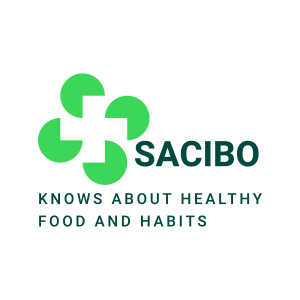








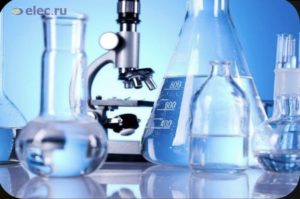





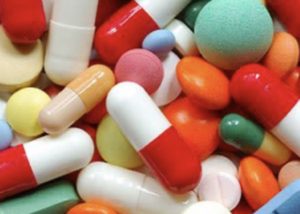
























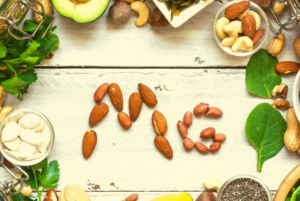





















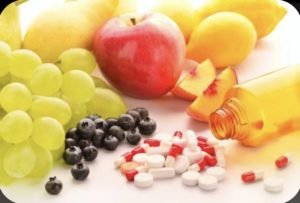

0 Comments